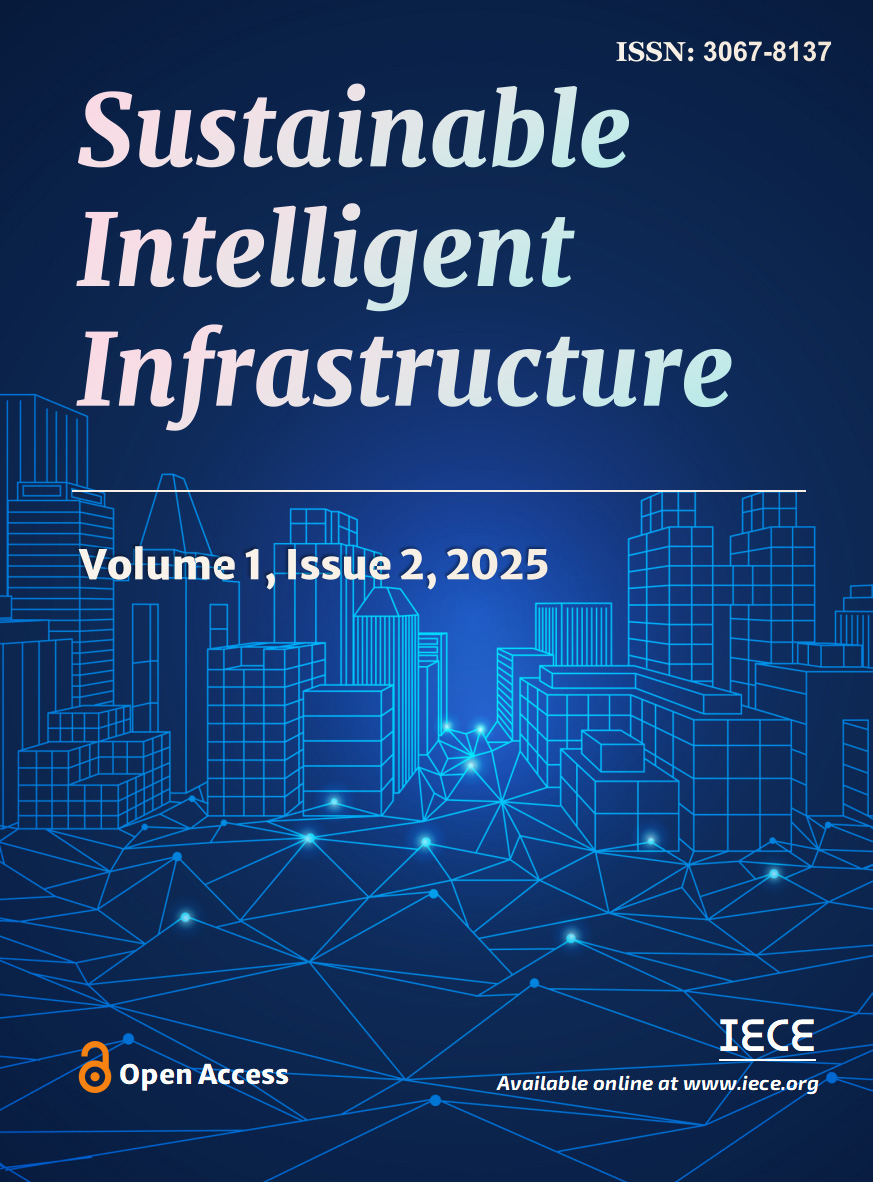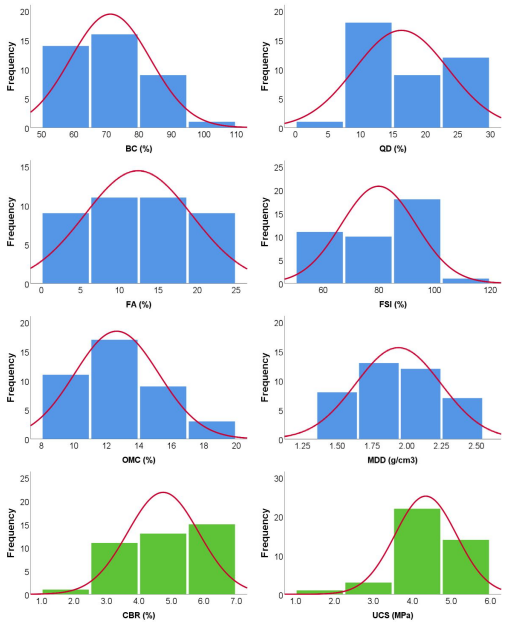Abstract
In this research paper, advanced artificial intelligence (AI) techniques have been applied in predicting the mechanical properties of black cotton soil (BCS) treated by the method of partial displacement of the soil. The materials of the displacement operation were fly ash (FA) and quarry dust (QD), which are both solid wastes derived from coal combustion in power plants and quarrying of stones for the production of aggregates. Previous activities show that BCS has never been treated by displacement of the soil sample but by the addition of these cementitious materials as wt % of the dry soil. The advanced AI techniques were the ANN, GP and the EPR, which executed forty data entries collected from experimental samples of the treated BCS. At the end of the modelling exercise, it was observed that the ANN with the performance indices of SSE 0.8, MAE 0.1, MSE 0.02, RMSE 0.141 and R2 0.983 for the CBR and SSE 0.9, MAE 0.11, MSE 0.023, RMSE 0.151, and R2 0.960 for the UCS outperformed all the other AI techniques. Also, the ANN outperformed other machine learning techniques applied in previous works. In conclusion, the models proposed in this research can be applied in the design and monitoring of pavement foundations constructed with treated BCS.
Data Availability Statement
Data will be made available on request.
Funding
This work was supported without any funding.
Conflicts of Interest
The authors declare no conflicts of interest.
Ethical Approval and Consent to Participate
Not applicable.
Cite This Article
APA Style
Onyelowe, F. K. C. Manan, A., Khan, A., Hanandeh, S., Ebid, A. M., & Ulloa, N. (2025). Machine Learning Prediction of the Improvement of Black Cotton Soil by Partial Displacement with Quarry Dust and Fly Ash for Sustainable Road Construction. Sustainable Intelligent Infrastructure, 1(2), 52–67. https://doi.org/10.62762/SII.2025.901022
Publisher's Note
IECE stays neutral with regard to jurisdictional claims in published maps and institutional affiliations.
Rights and permissions

Copyright © 2025 by the Author(s). Published by Institute of Emerging and Computer Engineers. This article is an open access article distributed under the terms and conditions of the Creative Commons Attribution (CC BY) license (
https://creativecommons.org/licenses/by/4.0/), which permits use, sharing, adaptation, distribution and reproduction in any medium or format, as long as you give appropriate credit to the original author(s) and the source, provide a link to the Creative Commons licence, and indicate if changes were made.


 Submit Manuscript
Edit a Special Issue
Submit Manuscript
Edit a Special Issue

 Copyright © 2025 by the Author(s). Published by Institute of Emerging and Computer Engineers. This article is an open access article distributed under the terms and conditions of the Creative Commons Attribution (CC BY) license (https://creativecommons.org/licenses/by/4.0/), which permits use, sharing, adaptation, distribution and reproduction in any medium or format, as long as you give appropriate credit to the original author(s) and the source, provide a link to the Creative Commons licence, and indicate if changes were made.
Copyright © 2025 by the Author(s). Published by Institute of Emerging and Computer Engineers. This article is an open access article distributed under the terms and conditions of the Creative Commons Attribution (CC BY) license (https://creativecommons.org/licenses/by/4.0/), which permits use, sharing, adaptation, distribution and reproduction in any medium or format, as long as you give appropriate credit to the original author(s) and the source, provide a link to the Creative Commons licence, and indicate if changes were made. 